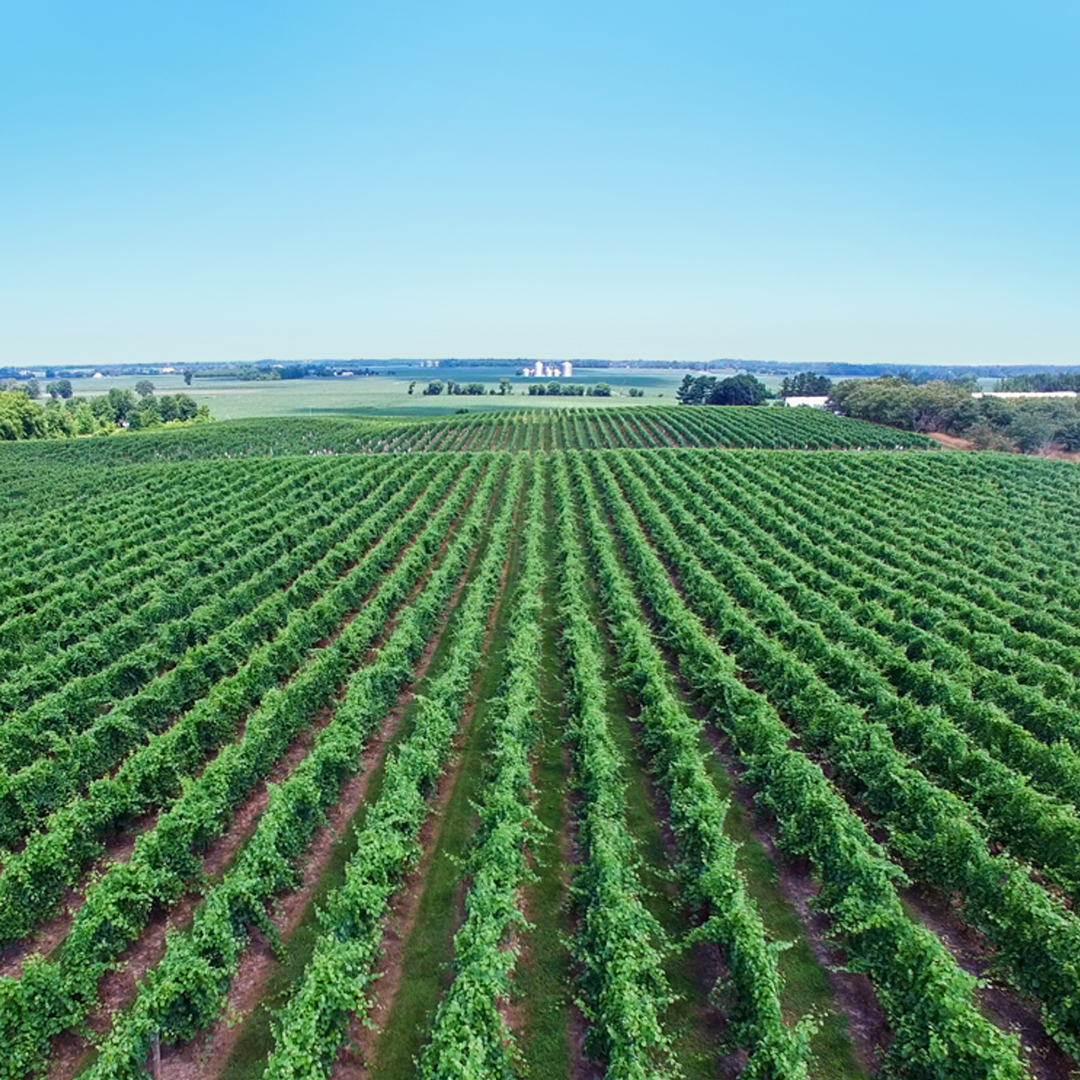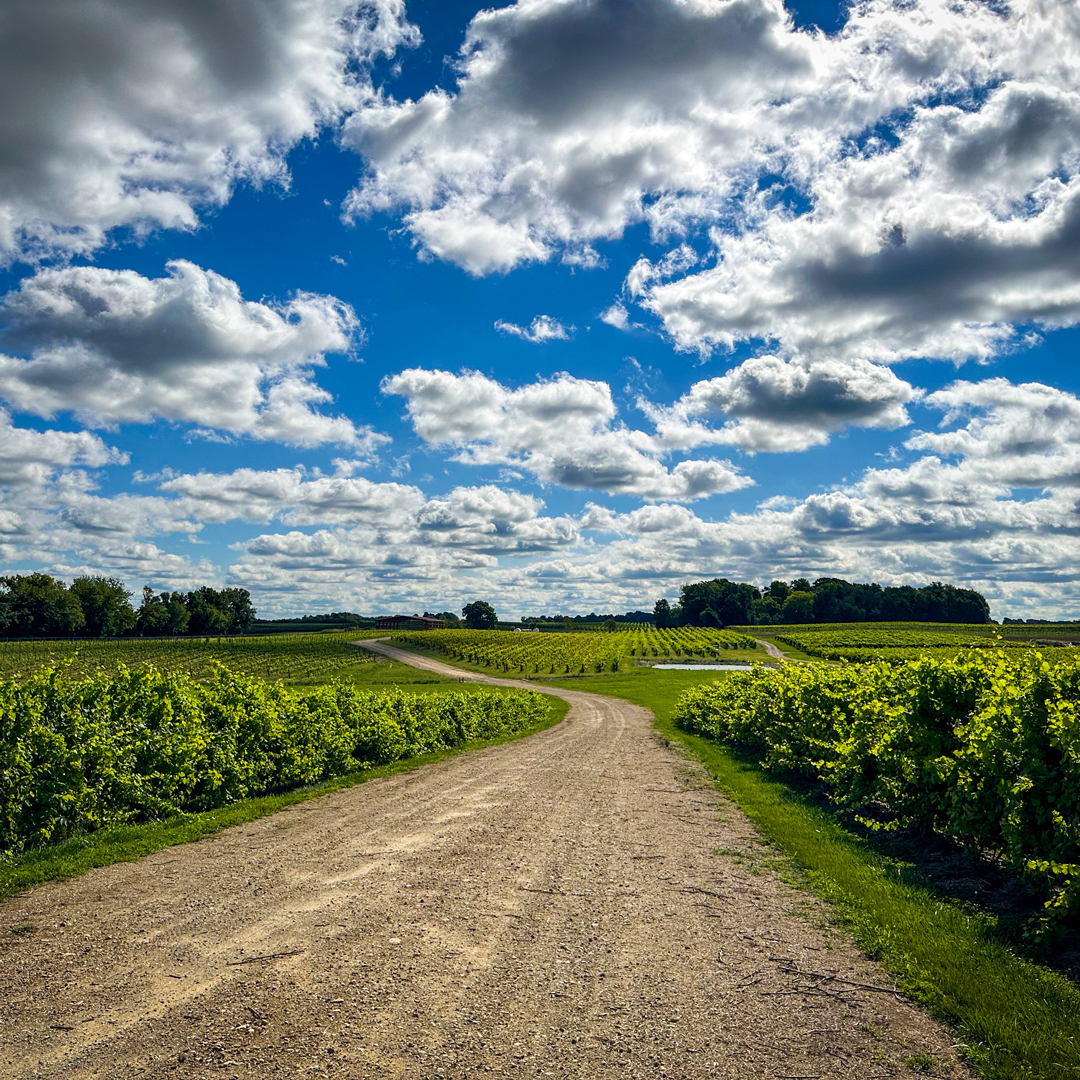The Michigan wine industry is home to 5 AVAs (American Viticulture Areas) and is the 7th largest wine producer in the United States. This article will provide a brief background on the history of Michigan wines, the growing regions, tourism and challenges facing Michigan wine producers.
The impact of the Michigan wine industry can be felt in terms of total dollars (bringing in over $6 billion annually) as well as the number of businesses and workers that support the industry, not to mention wine tourism. With around 200 wine producers in the state, more than 25,000 jobs are created by and in support of the Michigan wine industry.
Its grape-growing regions are located mainly along the lakeshore in the North and Southwest corner of the state. Grapevines are planted on more than 3,600 acres. Over 50 different grape varieties make their way into Michigan wines. Located far north, the state is well-known for producing superior cool climate grapes like Reisling, Pinot Noir, and Vidal Blanc.
A Brief History Of Michigan Wine
- 1000 BCE The Anishinaabe people were the original inhabitants before European settlement. Made up of 3 distinct tribes, the Ojibwe (also known as Chippewa), the Odawa, and the Potawatomi, formed the Council of The Three Fires.
- 1702 Antoine de la Mothe Cadillac planted grapevines at his settlement, Fort Pontchartrain, that would later become Detroit.
- 1863 Joseph Sterling planted a vineyard in Monroe County and opened the first winery in 1868. Others followed to contribute to a thriving Michigan wine industry that ranked third in production behind California and New York.
- 1918 Michigan banned alcohol production a year before the national 1919 Prohibition. Most Michigan wineries were forced to shut their doors, never to reopen. Those who survived did so selling their grapes to the Welch’s Grape Juice Company
- 1933 With the repeal of Prohibition, Michigan wine production was quick to recover due largely to the existing vineyards which sold their grapes to Welch’s as well as Detroit’s thriving bootleg alcohol industry.
- 1950s Changing palates driven largely from returning WWII servicemen who discovered drier European wines led to a shift away from sweeter wines. Grapes like Baco Noir, Riesling and Chardonnay became more widely planted.
- 1974 Tabor Hill’s Vidal Blanc was served at the White House during Gerald Ford’s presidency. The first midwest wine ever served at a state dinner.
- 1980s Many new wineries opened, and four American Viticulture Areas (AVA) were established: Fennville (1981), Leelanau Peninsula (1982), Lake Michigan Shore (1983), and Old Mission Peninsula (1987).
- 2016 Michigan wine’s 5th AVA, Tip of the Mitt, is established. Specializing in hybrid varieties.
Michigan Wine Regions
Lake Michigan Shore: It has unique terroir and growing conditions in the southwest corner of Michigan. The “Lake Effect” moderates temperatures for the vineyards planted along the lakeshore. This serves to prolong the growing season well into late autumn. It’s also located much further south than other Michigan wine regions, down on the 42 parallel (the same as Rome, Italy). The warmer climate allows red varietals (Cabernet Franc and Pinot Noir) to thrive here, unlike other parts of the state where they can’t ripen fully.
The tiny Fennville AVA is located on the Lake Michigan Shore. It was the first appellation named in Michigan and only the third in the US. Established in 1981, the same year as Napa Valley. The sandy soils and warmer climate allow this tiny region to produce diverse and distinctive red grape varieties.
Leelanau Peninsula: Known for its cool climate and high-quality wines. Located in Northwest Michigan’s Lower Peninsula, its unique glacial soils and chilly temperatures produce a variety of grapes known for their vibrant acidity and complexity.
Old Mission Peninsula: The tiny strip of land in Northern Michigan between the Leelanau Peninsula and the newest Tip of the Mitt AVA. Riesling is the star here, with styles ranging from sweet dessert wines to bone-dry still and sparkling wines.
Southeast Michigan: Not known as a big wine-grape growing region, but its urban influence has led to several newer developments in winemaking. The Thumb’s Up Wine Trail consists of a dozen wineries, cideries, and meaderies in and around Detroit.
Michigan Wine Tourism
Wine tourism has helped to revitalize many rural communities throughout Michigan. Visitors are drawn to picturesque vineyards and tasting rooms spread throughout Michigan. Many popular wine trails and routes are easily accessible from major metro areas.
- Leelanau Peninsula Wine Trail will allow you to discover several Northern Michigan wine producers. Traverse City is a great starting point.
- Lake Michigan Shore Wine Trail is a fantastic way to explore Southern Michigan. Easily accessible from Kalamazoo or a short drive from Chicago makes this a great weekend spot.
Beyond visiting wineries and tasting rooms on your own, many festivals and annual gatherings are held throughout the state from May through November, where visitors can sample a range of wines.
Many Michigan wineries partner with local restaurants for multi-course wine dinners featuring specific producers. May is Michigan Wine Month, a great time to look for wine dinners and activities.
Michigan Wine Challenges and Future Growth
There are several challenges facing the Michigan wine industry.
- Climate change: Given Michigan’s northern latitude and cooler climate, the more immediate impact from warming temperatures are likely to be delayed for a bit compared to other worldwide wine regions. The grape varieties that prefer cooler climates may need to be replanted from the southern part of the state to the northern growing regions. These changing climates make the state more vulnerable to new pests and diseases.
- Competition with other U.S. wine regions: While Michigan wine production has been growing in recent years, it lags far behind other more well-known US regions like California, Oregon, Washington, and New York. Consumer education is required to raise the prestige and accessibility of Michigan wines nationwide.
- Labor shortages: Michigan is not immune to the national struggle to find agricultural workers. Labor costs remain high, forcing many growers to modernize their operations to require fewer workers and rely more on machines in the vineyards and the winery.
Conclusion
The Michigan Wine industry has a long and notable history. Home to the 3rd oldest American Viticulture Area and four others since then. Such a diverse state has produced a wide range of grape varieties and wine styles here. Visiting Michigan wine trails and wineries is easy with pre-planned routes and proximity to several major metro areas. We encourage you to plan your next visit to explore Michigan wines today. Contact your favorite Michigan wineries for travel suggestions and information on wine dinners and other events and activities.



